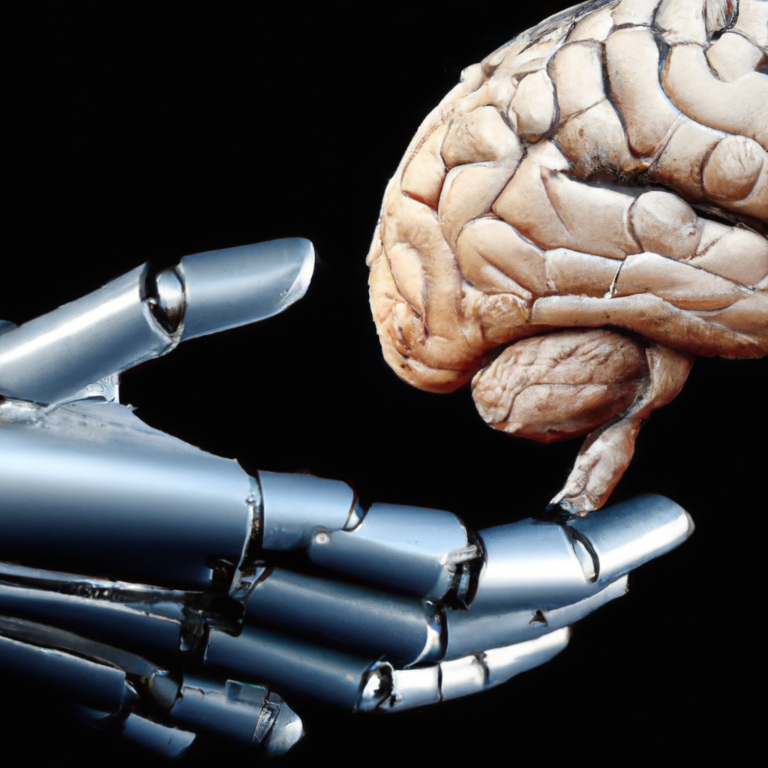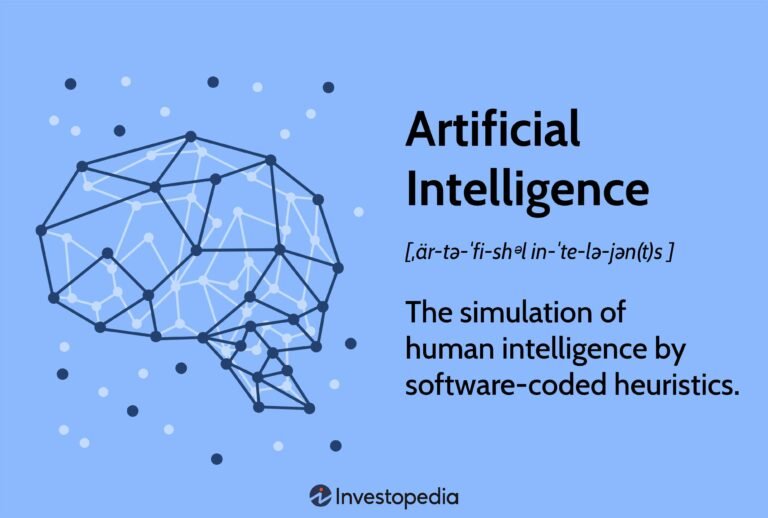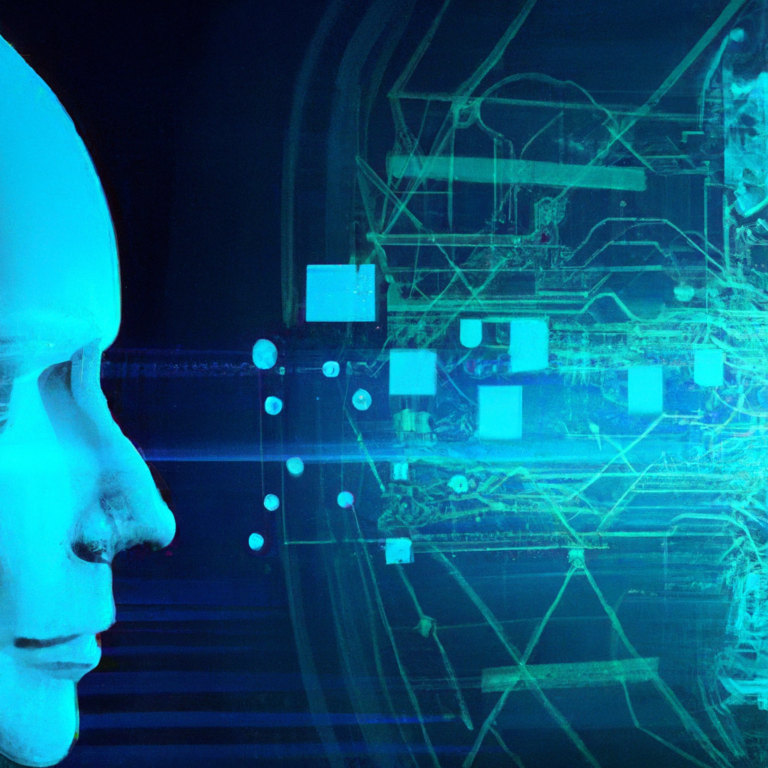AI And The Environment: How AI Can Help Us Reduce Our Impact On The Planet

In today’s rapidly changing world, concerns about environmental sustainability have become more important than ever before. The use of Artificial Intelligence (AI) has emerged as a promising solution to reduce our impact on the planet. With AI’s ability to gather and analyze vast amounts of data, it has the potential to revolutionize various sectors, including energy management, waste reduction, and climate change mitigation. By harnessing the power of AI, we can take significant strides towards protecting the environment and creating a more sustainable future for all.
The Role of AI in Environmental Conservation
In recent years, the use of Artificial Intelligence (AI) has emerged as a powerful tool in the field of environmental conservation. AI technologies have the potential to revolutionize the way we approach energy efficiency, resource management, pollution monitoring, waste management, and biodiversity preservation. By leveraging AI capabilities, we can make significant strides towards creating a sustainable and eco-friendly planet.
Enhancing Energy Efficiency
Energy efficiency is a critical aspect of environmental conservation, as it reduces the overall consumption of energy and minimizes the greenhouse gas emissions associated with energy production. AI can play a crucial role in enhancing energy efficiency in various sectors.
Smart Grids and Energy Systems
One of the most significant applications of AI in energy efficiency is the development of smart grids and energy systems. These intelligent systems use advanced algorithms and machine learning techniques to optimize the distribution and consumption of energy. By analyzing real-time data on energy usage, AI can identify patterns and make intelligent decisions to reduce energy wastage, balance energy supply and demand, and improve the overall efficiency of the grid.
Energy Optimization in Buildings
AI-powered solutions can also optimize energy usage in buildings. By monitoring and analyzing data from sensors, AI algorithms can identify areas of inefficiency and recommend energy-saving measures. For example, AI can control lighting and HVAC systems based on occupancy and environmental conditions, thereby ensuring that energy is used only when needed. These energy optimization techniques not only reduce energy consumption but also lead to significant cost savings for building owners.
AI-Powered Transportation Systems
Transportation is another area where AI can have a significant impact on energy efficiency. AI algorithms can optimize traffic flow, reduce congestion, and minimize fuel consumption. Intelligent transportation systems equipped with AI can analyze real-time traffic data and make informed decisions to improve route efficiency, promote eco-friendly modes of transport, and reduce carbon emissions.
Optimizing Resource Management
Efficient resource management is essential for sustainable development and environmental conservation. AI can help optimize resource usage in various sectors, leading to improved productivity and reduced environmental impact.
Predictive Maintenance in Industrial Processes
In industries, preventive maintenance is crucial for avoiding costly breakdowns and maximizing the lifespan of machinery. AI-powered predictive maintenance systems can analyze data from sensors and machine logs to identify patterns and predict equipment failures before they occur. By accurate forecasting, resources can be utilized more efficiently, ensuring that maintenance activities are planned and executed effectively. This approach reduces the need for wasteful and costly reactive maintenance, leading to improved resource management.
Precision Agriculture
AI has the potential to revolutionize the agricultural sector by enabling precision farming techniques. By integrating data from sensors, satellites, and drones, AI algorithms can provide farmers with valuable insights about soil health, weather patterns, and crop growth. This information allows farmers to optimize irrigation, fertilizer application, and pest control, minimizing resource wastage and maximizing yields. Precision agriculture not only conserves resources but also reduces the use of harmful chemicals, making it a more environmentally friendly approach to farming.
Water Resource Management
Water scarcity is a pressing global challenge, and AI can help optimize its management. By analyzing data from sensors and historical records, AI algorithms can provide valuable insights into water availability, quality, and usage. This information allows water resource managers to make informed decisions about allocation, conservation, and infrastructure planning. AI-powered water management systems can also detect leaks, monitor water quality in real-time, and optimize irrigation practices, thereby ensuring efficient and sustainable use of this precious resource.
Monitoring and Mitigating Pollution
Pollution is one of the biggest threats to the environment and human health. AI technologies can aid in monitoring and mitigating pollution, enabling us to take proactive measures to protect our planet.
Air Quality Monitoring
AI algorithms can analyze data from air quality sensors, satellite imagery, and weather forecasts to monitor and predict air pollution levels. By combining this data with machine learning techniques, AI can identify pollution sources, model air pollutant dispersion, and develop early warning systems. This information enables policymakers to implement targeted interventions to reduce pollution and improve air quality, leading to better public health outcomes and a cleaner environment.
Water Quality Monitoring
Similar to air quality monitoring, AI can also be used to monitor and analyze water quality. By leveraging data from sensors, drones, and satellites, AI algorithms can detect and predict water pollution events, such as harmful algal blooms or chemical contamination. This information helps water managers and regulators make informed decisions regarding water treatment, resource allocation, and pollution prevention measures. By proactively addressing water quality issues, we can protect aquatic ecosystems, safeguard human health, and ensure the availability of clean and safe drinking water.
Forest Fire Detection and Monitoring
Forest fires have devastating environmental and economic consequences. AI-powered systems can analyze satellite imagery, weather data, and other relevant information to detect and predict the occurrence of forest fires. By identifying fire hotspots and predicting fire behavior, AI algorithms can help firefighters and authorities respond more effectively. This proactive approach not only reduces the damage caused by forest fires but also minimizes the release of harmful greenhouse gases into the atmosphere.
Improving Waste Management
Effective waste management is crucial for reducing pollution and conserving resources. AI technologies offer innovative solutions to optimize waste management processes and promote recycling.
Smart Recycling and Sorting
AI-powered systems can revolutionize recycling by automating the sorting and processing of waste materials. By using machine learning algorithms, these systems can identify different types of recyclable materials, such as plastic, paper, glass, and metals, with high accuracy. This automated sorting process improves the efficiency of recycling facilities, reduces contamination, and increases the quantity and quality of recycled materials.
Waste Routing and Collection Optimization
AI algorithms can optimize waste collection routes and schedules based on real-time data on the fill level of waste bins and traffic conditions. By identifying the most efficient routes, AI-powered waste management systems can minimize fuel consumption, reduce emissions, and improve the overall efficiency of waste collection operations. This optimization leads to cost savings for municipalities and a cleaner environment for communities.
Illegal Dumping Detection
Illegal dumping of waste is a significant problem that contributes to pollution and environmental degradation. AI technologies, such as image recognition and data analytics, can help detect and prevent illegal dumping activities. By analyzing data from surveillance cameras or even social media, AI algorithms can identify potential dumping locations and alert authorities for immediate action. This proactive approach discourages illegal dumping, promotes proper waste disposal, and helps maintain the cleanliness of ecosystems.
Preserving Biodiversity
Biodiversity is the foundation of healthy ecosystems and a vital component of our planet’s resilience. AI can support efforts to preserve and protect biodiversity through various applications.
Species Conservation and Monitoring
AI can assist in species conservation and monitoring by analyzing large amounts of data from various sources, such as camera traps, acoustic sensors, and satellite imagery. By leveraging machine learning techniques, AI algorithms can identify and track endangered species, estimate population sizes, and monitor habitat fragmentation. This information is invaluable for conservation organizations and policymakers to develop effective strategies for habitat restoration, species protection, and biodiversity conservation.
Ecological Restoration and Management
AI technologies can aid in ecological restoration and management by analyzing complex ecological data and providing actionable insights. By combining data from multiple sources, such as satellite imagery, sensor networks, and climate models, AI algorithms can help identify areas for habitat restoration, predict the spread of invasive species, and optimize rewilding efforts. This approach ensures that limited resources are deployed effectively, maximizing the success of ecological restoration initiatives.
Combating Poaching and Illegal Trade
Poaching and illegal wildlife trade pose significant threats to biodiversity conservation. AI can augment anti-poaching efforts by analyzing data from surveillance systems, acoustic sensors, and even social media to detect signs of illegal activities. By identifying patterns and predicting poaching hotspots, AI algorithms can help authorities deploy resources more effectively and deter poachers. Furthermore, AI-powered applications can assist in the identification of illegally traded wildlife products, enabling authorities to disrupt illegal supply chains and protect endangered species.
Challenges and Considerations
While AI has immense potential in environmental conservation, there are challenges and considerations that need to be addressed.
Ethical AI Usage
The ethical use of AI in environmental conservation is crucial. AI algorithms must be designed and implemented in a manner that respects human rights, avoids bias, and promotes fairness. It is essential to ensure that AI systems do not infringe upon privacy rights or contribute to discriminatory practices. Transparent and accountable AI governance frameworks need to be established to address these ethical concerns effectively.
Data Privacy and Security
The use of AI involves the collection and analysis of vast amounts of data, including personal and sensitive information. It is vital to protect the privacy and security of this data to maintain public trust and confidence in AI applications. Robust data protection measures, such as encryption and anonymization techniques, need to be implemented to safeguard sensitive information. Additionally, AI systems should have built-in mechanisms to detect and prevent data breaches and unauthorized access.
Carbon Footprint of AI
As AI technologies become more prevalent, there is a need to address the carbon footprint associated with their development and deployment. From data centers to computing infrastructure, AI systems can consume significant amounts of energy and contribute to greenhouse gas emissions. It is essential to develop energy-efficient AI algorithms and explore renewable energy sources for powering AI systems. Additionally, strategies for responsible and sustainable disposal of AI hardware and electronic waste need to be established.
Human-AI Collaboration
AI should be seen as a tool to augment human decision-making and not as a replacement for human judgment. Collaboration between humans and AI systems is crucial for effective environmental conservation. Experts in the field must work closely with AI developers to ensure that AI algorithms are aligned with human values, goals, and priorities. This collaboration allows for the development of AI systems that are based on a deep understanding of environmental challenges and can provide meaningful insights to support decision-making.

Promising Initiatives and Use Cases
Several initiatives and use cases highlight the potential of AI in environmental conservation.
Google’s DeepMind and Energy Efficiency
Google’s DeepMind has developed an AI system that optimizes energy usage in data centers. By applying machine learning algorithms to real-time data on energy consumption and environmental conditions, the AI system has achieved significant energy savings. This innovative approach demonstrates how AI can enhance energy efficiency in large-scale operations, reducing environmental impact and operational costs.
AI in Precision Farming: The Way to Sustainable Agriculture
Precision farming techniques, enabled by AI technologies, are transforming the agricultural sector. Companies like The Climate Corporation, a subsidiary of Bayer, are using AI to analyze data on soil health, weather conditions, and crop growth to provide farmers with personalized recommendations for irrigation, fertilization, and pest control. This data-driven approach ensures efficient resource usage, reduces environmental impact, and promotes sustainable agricultural practices.
Smart Cities and AI-Driven Sustainability
Smart cities are incorporating AI technologies to improve sustainability and enhance quality of life. AI-powered systems can optimize energy usage, manage waste more efficiently, reduce traffic congestion, and promote eco-friendly transportation options. By leveraging data and AI analytics, cities can make informed decisions to reduce their environmental footprint and create more sustainable urban environments.
The Future of AI in Environmental Conservation
Looking ahead, AI is expected to play an increasingly significant role in environmental conservation. The following factors will shape the future of AI in this field:
Advancements in AI Technology
Continuous advancements in AI technology, such as deep learning, natural language processing, and reinforcement learning, will enhance the capabilities of AI systems in solving complex environmental challenges. These technological advancements will enable more accurate predictions, faster data analysis, and better decision-making for environmental conservation.
Collaborative Global Efforts
International collaboration is crucial to harness the full potential of AI in environmental conservation. By sharing data, knowledge, and best practices, countries and organizations can work together to develop AI solutions that address global environmental challenges effectively. Collaboration platforms and partnerships should be established to facilitate information exchange and cooperation.
Potential Impact on Sustainable Development Goals
AI has the potential to contribute significantly to the achievement of the United Nations’ Sustainable Development Goals (SDGs). By improving resource efficiency, reducing pollution, and promoting biodiversity conservation, AI can help address several SDGs, such as clean energy, sustainable cities, responsible consumption and production, and life on land. Integrating AI strategies into existing sustainability frameworks will maximize the positive impact on the SDGs.

Conclusion
AI has emerged as a valuable tool in environmental conservation, offering innovative solutions to enhance energy efficiency, optimize resource management, monitor and mitigate pollution, improve waste management, and preserve biodiversity. By leveraging AI technologies, we can tackle pressing environmental challenges and create a sustainable future. However, it is crucial to address the ethical implications, data privacy and security concerns, carbon footprint, and the need for human-AI collaboration. Promising initiatives and use cases demonstrate the potential of AI in this field, and collaborative global efforts are necessary to drive progress. As AI continues to advance, it holds immense promise in shaping a more sustainable and environmentally conscious world.
Want to write articles like us? Get your copy of AI WiseMind here!






